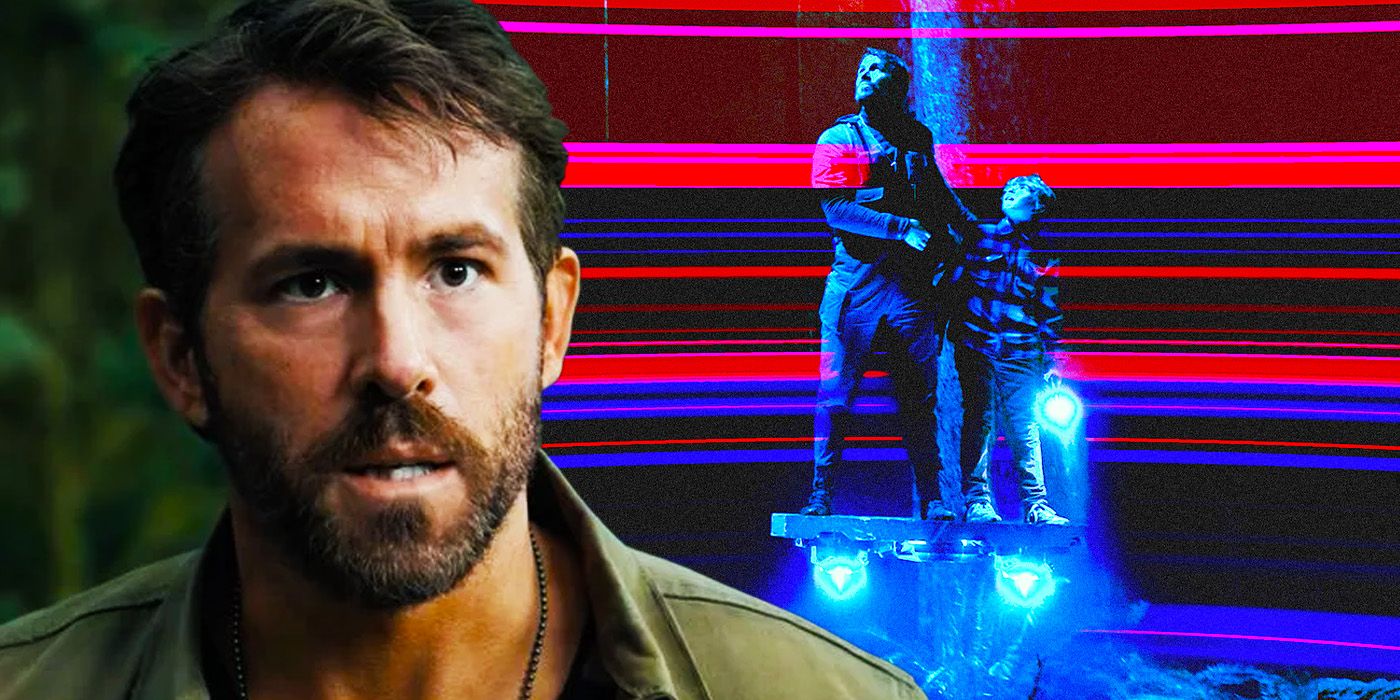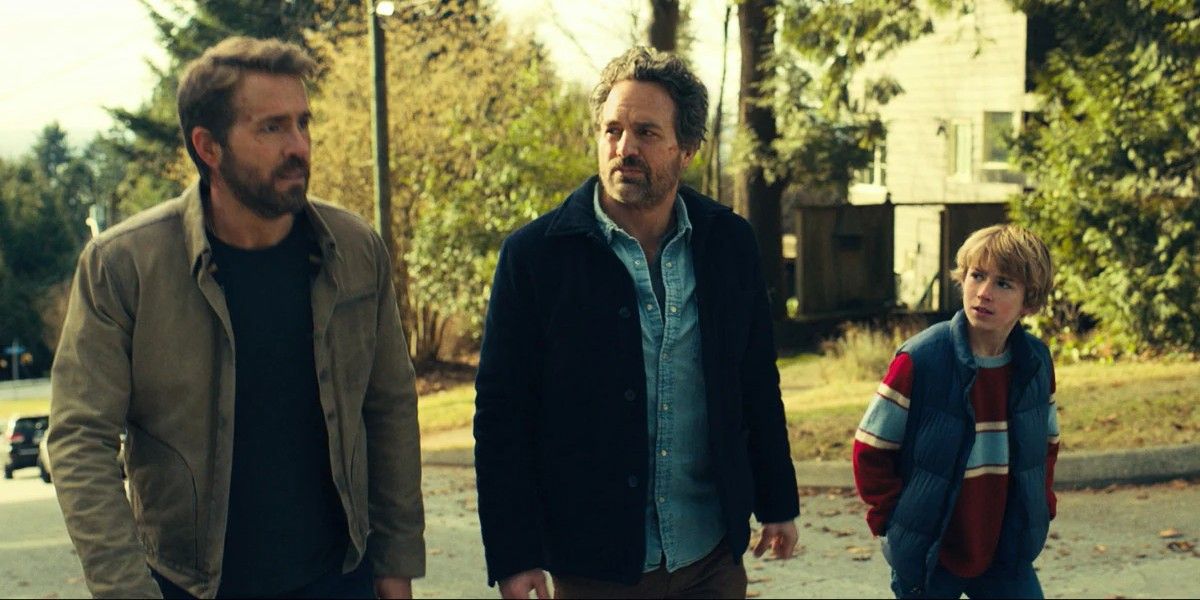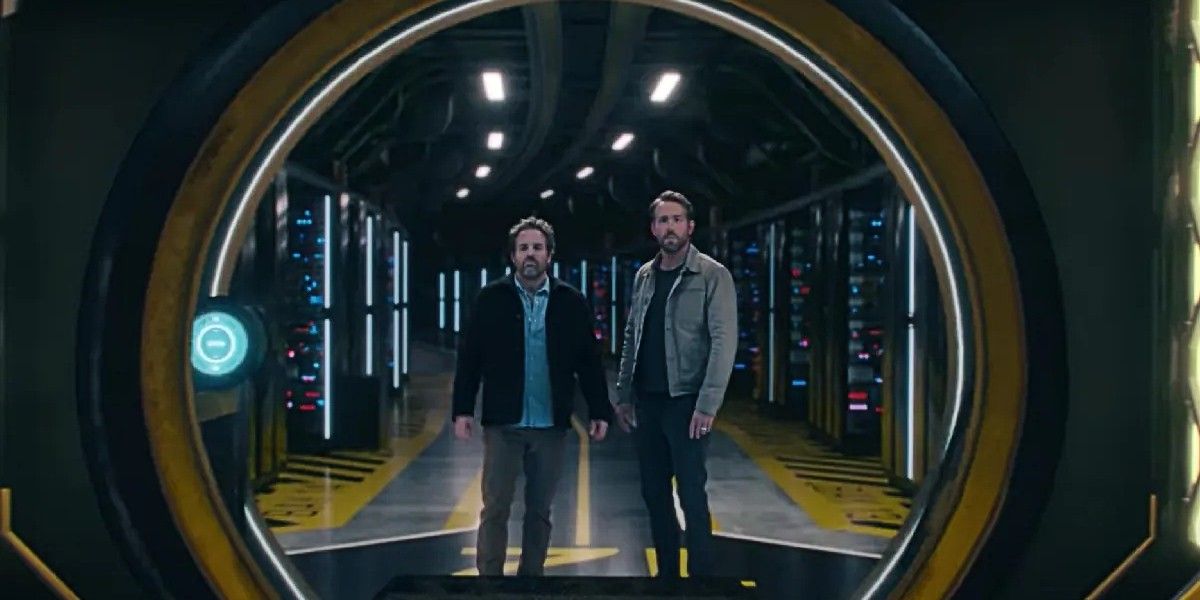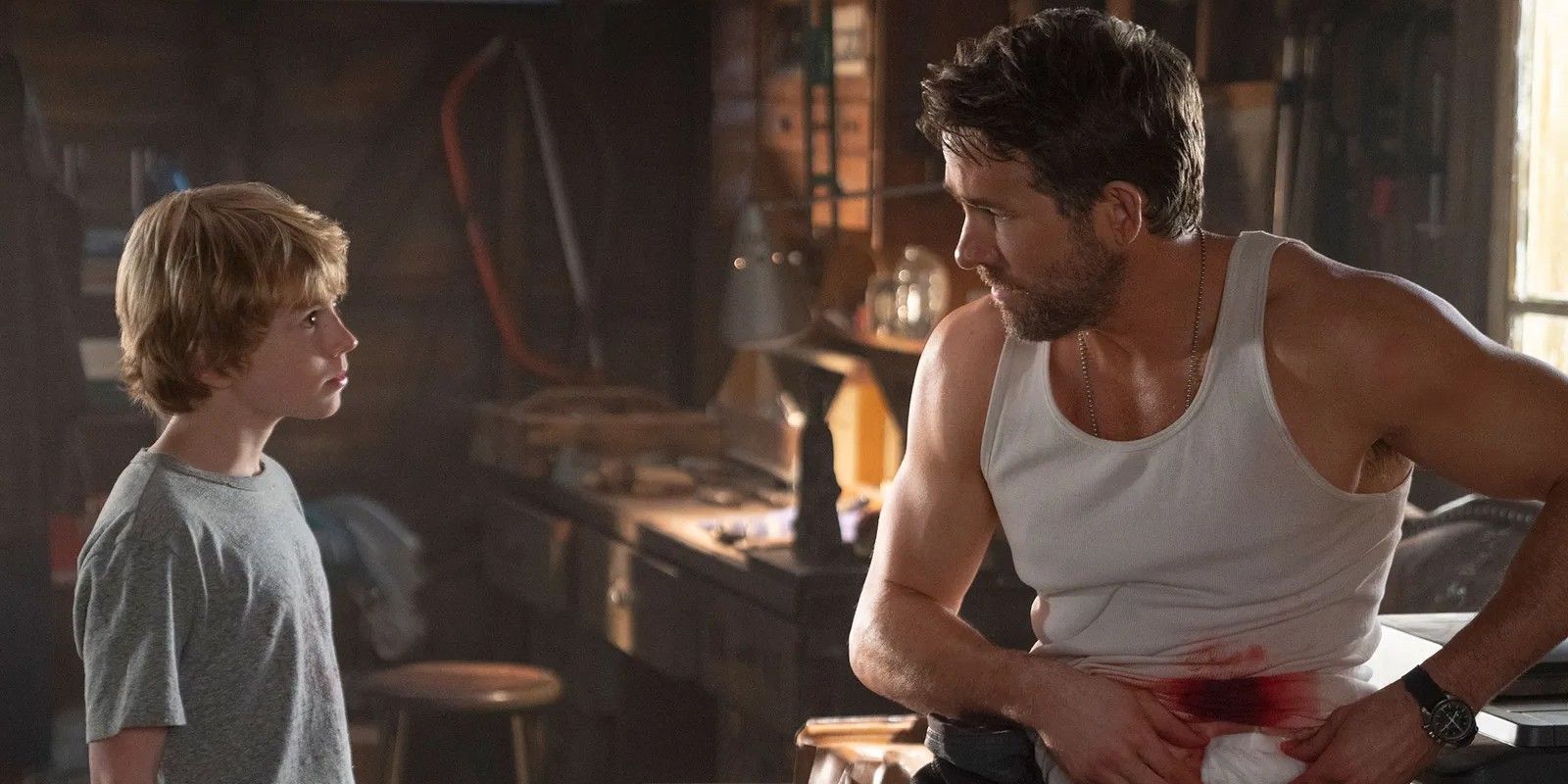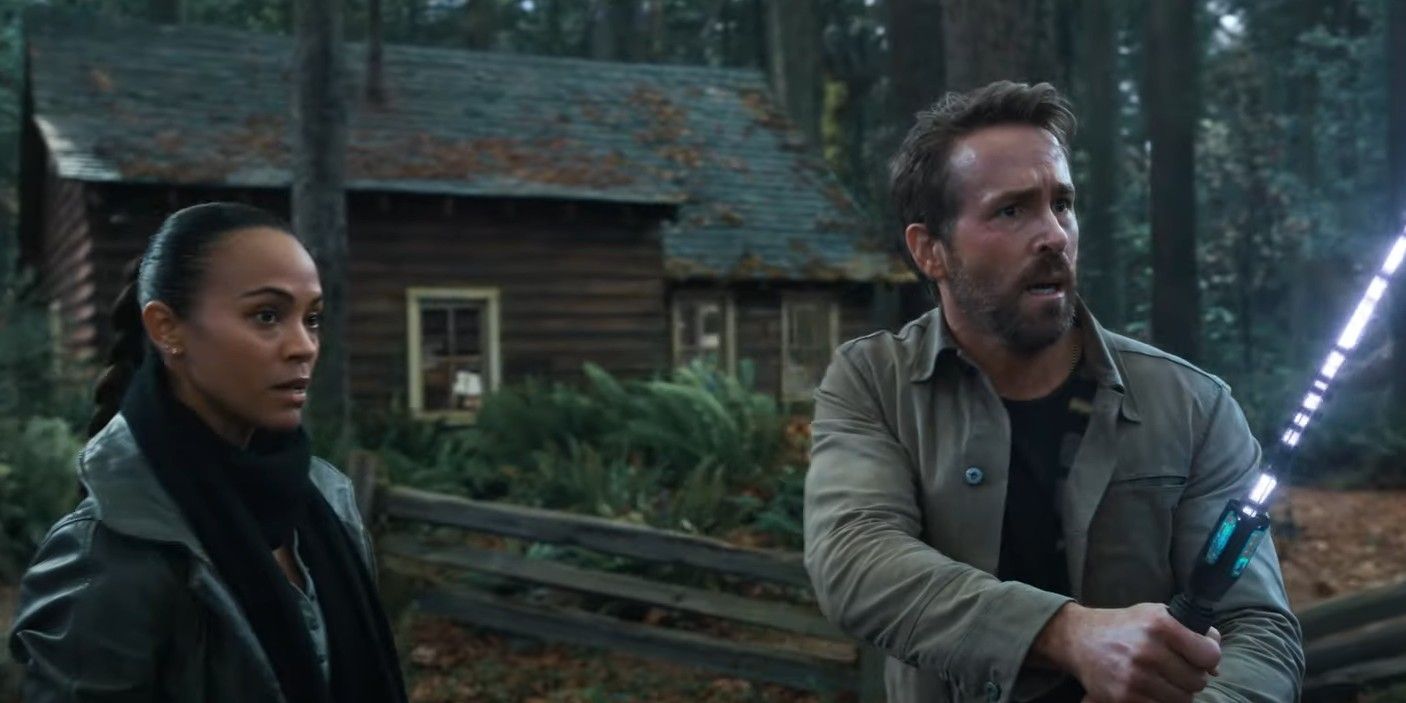Warning! SPOILERS for The Adam Project.
The Adam Project deploys the sci-fi narrative conceit of time travel - but how does it work? Directed by Shawn Levy, it stars Ryan Reynolds as Adam Reed, a time traveler from the year 2050 who returns to 2022 and meets his 12-year-old self. Young Adam is played by Walker Scobell alongside Mark Ruffalo and Jennifer Garner who have reunited 18 years after 13 Going on 30 to play Adam's parents. The movie, which was released on Netflix on March 11, 2022, is the second feature that Shawn Levy has done with Ryan Reynolds after Free Guy. The duo will also team up again for Deadpool 3, which still doesn't have a release date, but is set to officially bring the Merc with the Mouth to Marvel Studios.
In The Adam Project, Ryan Reynolds plays grown-up Adam Reed, who steals his time jet to return to 2018 in search of his wife Laura, played by Zoe Saldaña. Laura had jumped to 2018 to figure out an anomaly when her jet exploded, presumably killing her. Adam, however, believes she’s alive and goes after her. Accidentally landing in 2022, he meets his younger self and they learn to work together to help save Laura and heal from the trauma of losing their father. They also have to stop adult Adam's boss Sorian (Catherine Keener) from using time travel in a way that could have disastrous effects on the world, Biff-style.
Because it's a time travel movie, it has to contend with the problem of defining its time travel rules. In fiction, time travel is handled in different ways, depending on the rules of the fictional universe. The Avengers: Endgame version of time travel deals with branch timelines, which are created when a time traveler changes something in the past. The Back to the Future type of time travel, however, makes it so that a time traveler can change the future by changing the past. All of these time travel hypotheses have been proposed in real life when scientists consider the possible repercussions of time travel. Where exactly does The Adam Project fall in its time travel philosophy? Here’s how time travel works in the Ryan Reynolds flick.
Adam's Dad's Magnetic Particle Accelerator Explained
Adam’s dad, Louis (Ruffalo), is a quantum physicist and a professor who also works for a company owned by a woman named Maya Sorian. She funds his research and allows him to create a large particle accelerator in the facility. Particle accelerators exist in real life and have made headlines over the past decade or so, the most famous one being the Large Hadron Collider at CERN. Accelerators use energy to speed up beams of particles and powerful magnets to direct and focus the particles. They have been used since the 1930s to investigate different aspects of particle physics.
In the movie, Louis creates the Adam Project, his magnetic particle accelerator, to investigate a hypothesis that they could “create utilitarian wormholes in space” using enough energy - that is, portals that could actually be used for travel across space and time. In real-life science, it has been hypothesized that black holes could be used to travel backward in time, but it would be a one-way trip - and a potentially deadly one. Black holes could potentially rip any person or vessel that tried to travel through them apart. The type of wormholes that Louis’s Adam Project collider creates also use a stabilizer algorithm called ISPCA (Infinitely Shifting Plasma Containing Algorithm) that allows for them to be used to travel across space-time without destroying the user.
Could Wormholes Be Used For Time Travel?
In theory, yes. In 1935, Albert Einstein and Nathan Rosen used the theory of general relativity to propose the existence of bridges through time that could be used to connect two different points in space-time. This is what’s known as an Einstein-Rosen bridge. Popular culture has used this theory to explain everything from intergalactic travel to time travel. In the MCU’s Thor, Jane Foster calls the Bifrost an Einstein-Rosen bridge, which is what the Asgardians use to travel between the nine realms. Real physicists have hypothesized about the potential of using wormholes to eventually make it possible to traverse between two points across the universe faster than the speed of light.
If time travel can be done, science suggests that wormholes could be the mechanism to make it possible, but perhaps only in one direction. The wormhole would have to be traversable, meaning a person would need to be able to pass through it unharmed. One theory suggests that, in order for a wormhole to be traversable, a substance with negative energy would have to exist. Physicists believe that it's possible to create such a substance, and that time travel might actually require less of it than previously believed. However, no known attempts to actually travel through time using wormholes have been made public.
Why The Adam Project Doesn't Use Alternate Timelines Or The Multiverse
When young Adam asks his older self if their meeting would create a potential branch timeline, he shuts the idea down immediately. In the world of The Adam Project, time travel works much more like it does in Back to the Future - whatever is changed in the past alters the future. That brings into question the existence of the multiverse, which adult Adam basically rejects. The reason that alternate timelines and the multiverse can't exist in this movie is that the plot would not work if they did. Adult Adam going back in time would not alter anything about the time that he came from and would instead create a branch timeline. The Adam Project's plot relies on the ability to alter the past. Sorian couldn't have created the future that adult Adam came from if she wasn't able to effectively change her own past through time travel. Because this time travel theory uses fixed points, as well, there is likely only one timeline in which the characters exist. If there is a multiverse, it would remain unaffected by anything these time travelers do.
What Are The Adam Project's Fixed Points In Time?
In most time travel fiction, meeting your past self is a big no-no that can create all sorts of paradoxical trouble. For one thing, meeting his younger self should be creating new memories that flood his brain as soon as he does anything differently from what he remembers from 2022, the way Old Joe remembers everything Joe does in Looper. However, The Adam Project fixes the “new memories” problem by explaining fixed points, or where on the temporal stream a person is from. Adult Adam tells his younger self that the reason he doesn’t remember any of their encounter or the subsequent adventure they will have is that he isn’t in his correct time, yet. He explains that everyone only has one point in time where they belong and that his new memories won’t encode until he returns to 2050. Of course, none of that matters when the two Adams help their dad destroy time travel, effectively erasing the experience they had together.
How The Adam Project's Past Affects The Future
Changes to the past change the future, but remnants of the experience will still exist in the essence of someone's memory. Adam can't remember anything that he and his younger self are doing in the moment because he's not in his fixed point, but there's another way that the past affects the future. When Adam and his younger self finally meet up with his wife Laura in 2022, she reveals to them that Sorian has already traveled back in time to change the past, making a future that Adam says is like The Terminator on a good day, where she has universal control over time travel. Laura tells Adam that he has to go to 2018 to prevent his father from inventing time travel, but Adam doesn't want to because he's afraid they'll never meet. Laura, however, believes that everything they have ever done together will have already existed and that they will have enough of an inkling of those memories to find each other.
It turns out that Laura's hypothesis was correct. After both Adams go to 2018, they help their father steal back his algorithm, which then prevents time travel from ever being invented, sending them both back to their fixed times without any memory of those events. However, both characters fulfill promises they made before they stopped the invention of time travel. Young Adam remembers to give his mother a hug for adult Adam, and adult Adam finds Laura again. This suggests that time in The Adam Project exists on a loop, and that some remnants of every loop still exist even when the loop is altered. A time traveler can alter the way time will happen, but they cannot completely erase all traces of the original timeline.

